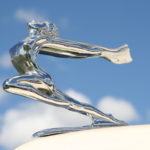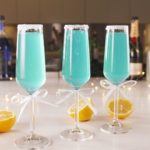Wine Myths ??? Part 1
“Wine gets better with age”. A cute analogy but far from the truth. “The more expensive a bottle of wine costs, the better it is”. If you go by this theory, you’ll go broke before you ever find the wines you love. It’s sayings like this that I still hear to this day, even from what I thought was a more educated wine consumer. I thought we had grown in recent years as a wine society? My point being, there are so many falsehoods associated within the world of wine that grape lovers far and wide who believe in these age old myths are sadly misinformed. Let’s take a look at a number of these traditional lore and get a better understanding between half-truth and reality.
#1…. Wine Gets Better With Age…… Though this can be a true statement, truth be told, as a whole, only a very small percentage of wines fit into this category. Less than one tenth of 1% of all the wine in the world produced each vintage will actually benefit from long term aging. Most wines on the market these days are meant to be consumed within a very short period of time. That’s because nearly 90% of all wine is consumed within 7 days of its purchase. The standard rule of thumb, but not bible, is to drink white wines within 2 to 4 years of its vintage date while reds typically are at their peak between 2 and 6 years. Cellaring wine can be a rewarding yet tricky and risky adventure. It’s like a child, it needs constant care and looking after until it’s mature and ready to stand proud.
There is no specific formula as to how long any wine may age. Some have lasted over 100 years while some barely make it to 100 weeks. I’ve had folks ask me about straw covered bottles of Chianti (known as a fiasco) that they inherited from their relatives years ago. Thinking it could be something they should get appraised on Antiques Roadshow, I sadly inform them that their tastefest in waiting is in fact, nothing a magician or Christ himself could bring back from the dead. It’s gone, dead, plonk and likely vinegar by now. Remember my saying: It’s better to drink a wine a day too early rather than a day too late. As far as the adage goes, use it as a compliment to wine, because as we all know, only women get better with age.
#2…. The More Expensive A Wine Costs, The Better It Is…. Savvy wine shoppers know better than to believe this disjointed phrase but many novices still regard this notion as fact. Price never reflects the true quality of what may be found in any bottle of wine. Surely enough, many pricey collectables are great examples of price = quality ratio, but there have been times, too numerous to mention, that I have shaken my head in utter amazement having tasted a mediocre wine with an astronomical price tag.
Many shoppers with deep pockets often regard paying enormous amounts for wines as a method of impressing others with its cost rather than the juice inside. Their odds may increase on finding a quality quaff with this selection process but in no way is it a sure fire certainty. Fabulous wines come in all price ranges. It is up to a savvy consumer to seek them out, taste and sample until you find something you enjoy that fits your budget. Try before you buy if at all possible. As far as wines with a high ticket price, let’s leave that distinction to older proven vintages and the small lot production wannabe’s with mark ups decided by their supply and demand. Is your $70 steak better than my $15 one at a different restaurant? Is your $200 Cabernet better than my $25 one? Only your wallet and your palate can lend merit to the above myth.
#3…. Red Wine With Meat – White Wine With Fish… For years, this logic was as tradition as “No White Shoes after Labor Day”. With the explosion of culinary choices and cuisines from faraway lands now available to the extensively educated palates of today’s foodies, you may as well throw out this theory along with your Beta cassettes and Nehru jackets. This rule was long meant to be broken, thanks in part to an ever expanding selection of varietals, both red and white, currently available in the marketplace.
Most of all, over the last few generations, our eating habits have changed. We experiment more, try new tastes, new styles, we expose our taste buds to foods both new and exciting. We are free to experiment with new wines as well, resulting in eye opening pairing sensations once thought of as taboo by the wine press. White wines that were once soft and delicate now range from hearty to complex. Red wines that were once light and fruity can now be found to be meaty, floral, exotic and high octane. The marriage possibilities between different styles of food and wine are practically endless. The fun in doing so is one of life’s great pleasures. A Bordeaux or a Syrah with broiled salmon, go for it. Viognier or Torrontes with grilled lamb, let me be the first in line. As long as it tastes good to you, there is no longer any right or wrong way in pairing your favorite food with your favorite wine. Just enjoy.
#4…. Wine Is Bad For Your Health…. Nearly every medical journal and periodical written over the last 20 years have lauded the health benefits associated with the drinking of wine. Its effects include decreased risk of heart disease, stress reduction, increased blood flow, lowering blood pressure and bad cholesterol, and even fighting certain cancers. Keep in mind that the consumption of alcohol is not for everyone. Those with medical complications or those taking prescribed medicines should first consult their physicians before consuming any amount of wine. For those of us who are fortunate to enjoy our favorite beverage on a daily basis, we hope that it is done in moderation and with responsibility. That is the best advice that can be given to us to help make wine a healthy part of our daily diet.
#5…. Wines With Corks Are Better Than Wines With Screw Caps… Suggesting that a wine sealed with a cork is far superior than ones sealed in a screw cap is simply for the close minded and nonconformists. In recent years, the cork industry has been befallen with a large number of problems, from shortage of quality cork to widespread TCA cork taint that plagued up to 15% of every bottle of wine sealed. That means that for every case of wine you bought, you could expect at least one of more bottles to be corked, tainted or problematic. Though the industry has made enormous strides in dealing with these issues, problems still prosiest.
Nothing can be more gut wrenching than opening an expensive bottle of wine, stored and cellared for a number of years, only to find upon opening that it is no longer acceptable to consume. You certainly can’t take it back for a refund or exchange. Crumbling cork, wet, spongey, dried out, snapped in half, any number of factors may be the cause. Problems with synthetic and rubber cork alternatives haven’t been the solution wineries have been looking for also. On the short term, they seem to suffice, but in long term aging and cellaring practices, faults are rampant resulting in a case of buyer beware.
Screw cap technology has shown to be a safe and effective alternative to traditional cork. They preserve freshness and hold true to long term cellaring without fault. I have yet to open a bad bottle that has been sealed in a screw cap device. The only thing to watch out for when purchasing a wine under this type of seal if making sure there is no dent or deformity to the cap as this may allow the presence of air to seep into the bottle, causing funky odors and tainted flavors.
Over 90 % of wines that come from New Zealand and an ever increasing number from Australia, now over 70%, are sealed exclusively with screw cap closures. Often associated with Skid Row wines, the use of screw caps are gaining respect by wine makers and consumers alike. They are an ease to open and reduce clutter from all the various openers, foil cutters and various wine utensils stored in your cabinet drawers.
The pageantry of removing a cork and hearing the resounding pop will always remain a feast for the senses. But do you want your wine to be remembered for its cork, or its taste? Until the wine industry can guarantee me that cork sealants are 100% foolproof, I will continue to sing the praises of the almighty screw cap enclosures as I sip the fresh and untainted flavors their wines exhibit.



